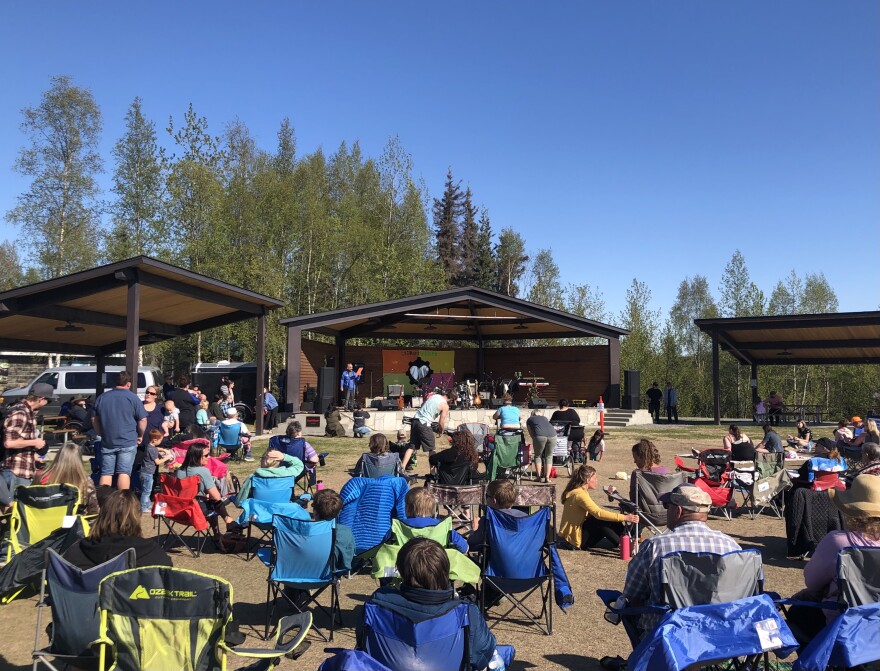The Kenai Peninsula’s older population is larger than it was a decade ago. It’s one of the many trends that emerged in U.S. Census data released earlier this month, which also shows that the peninsula’s population has generally grown, while others, like Anchorage, have seen numbers drop.
“I think, especially given all the things that we’ve gone through over the last couple years, to be able to continue to have positive growth is very, very important," said Tim Dillon, with the Kenai Peninsula Economic Development District. Dillon was the coordinator for the 2020 Census on the peninsula.
"And I think the concern is how much growth you have and how quickly, because your infrastructure has to match with the numbers that you have," he said. "So I think it’s a good balance right now.”
The population of the Kenai Peninsula Borough increased by 6 percent in the last decade, from 55,400 to 58,800.
The populations of Kenai and Soldotna each increased by around 4 percent. Homer saw an increase of over 10 percent, while Nikiski and Seward saw a less than one-percent rate of change in their populations. Sterling’s population increased by around 5 percent.
Kalifornsky, which stretches from Soldotna down K-Beach Road, grew by 8 percent, to almost 8,500 residents.
“That area basically leads the way," Dillon said. "And it says a little bit about folks, whether they want to live in an incorporated area, incorporated city, or an unincorporated area. And I think that’s going to continue to be something that people have to flesh out, what they really want.”
The state’s overall population grew by over 3 percent. The Mat-Su Borough saw the most population increase of any area in the state, with over 18,000 more residents in 2020. That’s consistent with projections that the Mat-Su will continue to be the fastest-growing region in Alaska.
Still, Alaska, and the peninsula, actually grew more in the years before 2010, said David Howell, demographer for the state of Alaska.
“Pre-2010, with the recession down south, we had a lot of people moving into the state," Howell said. "So, definitely a lot of growth and migration that we have not seen this decade. Or at least later in the decade.”
Largely, Alaska’s more isolated communities saw population growth in the last decade.
“A lot of the country, we’re seeing growth in these more urban areas," Howell said. "And in Alaska, we’re seeing growth in our more rural areas, more so than the urban areas. So that’s been an interesting break from a lot of the country.”
He says, in those rural communities, more young people are staying put and having children than migrating out.
Meanwhile, the growing population in the Kenai Peninsula is also an aging one.
"So, we didn’t get median ages with this release. But based on our population estimates, it’s kind of been going back and forth with Haines on the oldest median age in the state," Howell said.
The census data also includes information about race.
On the whole, Alaska is less white than it was in 2010.
That’s true for the Kenai Peninsula Borough, by a few percentage points. Nearly 80 percent of census respondents in the Kenai Peninsula Borough said they were white in 2020, versus 85 percent in 2010. Seven percent were Alaska Native or American Indian. Four percent said they had Hispanic origin.
Alaska’s redistricting board still has to take a look at the data and draw a new map based on the numbers, ahead of the 2022 election. And there’s more data expected to come out next year.
The numbers will have many impacts, from allowing more liquor licenses within a given city to changing eligibility for federal programs, Dillon said.
"Right now, we’re in a situation where there’s more funding out there than ever before," he said. "And it’s probably a once-in-a-lifetime that you see the funding. And some of it is tied back to the census numbers.”
You can read the 2020 Census data here.




